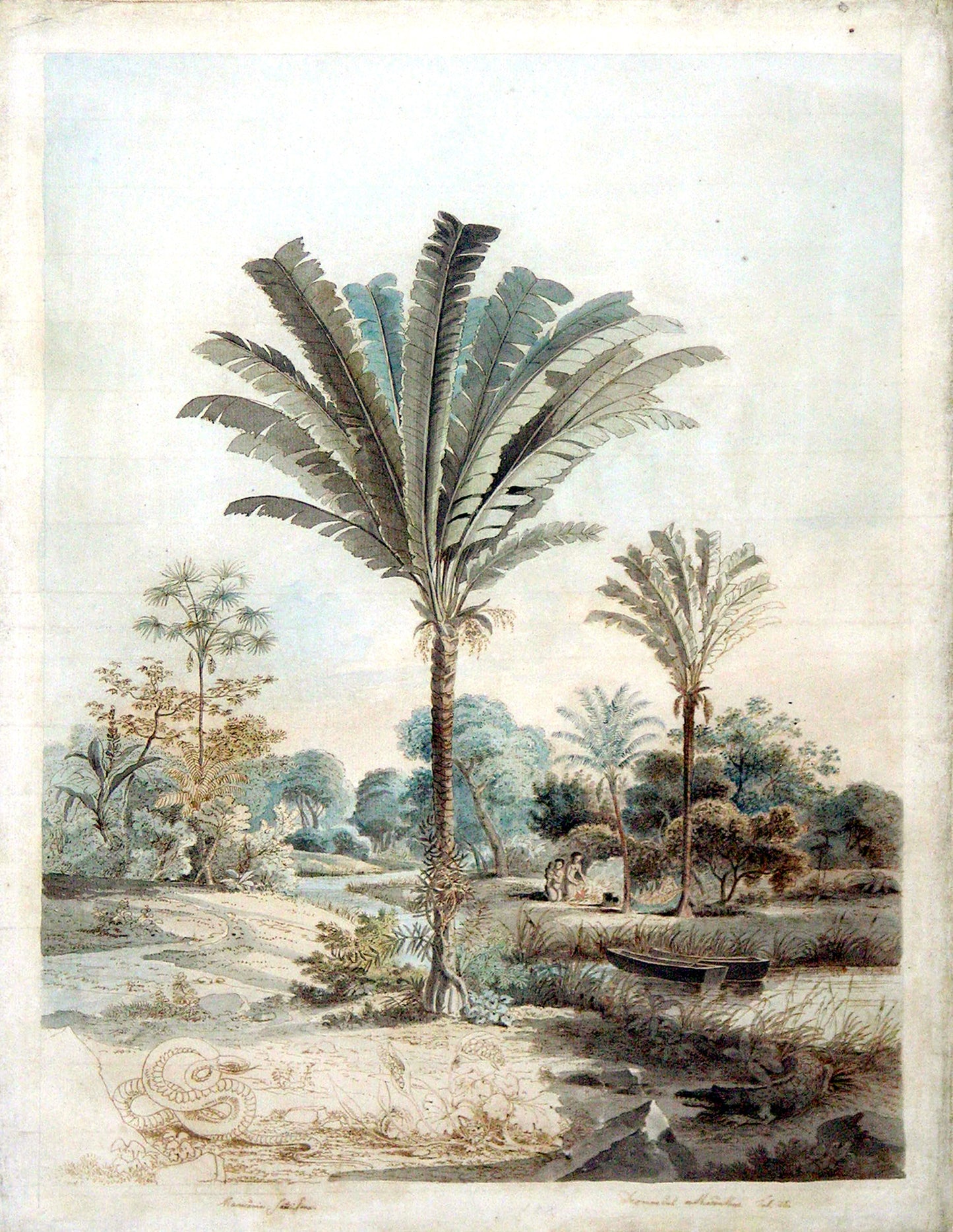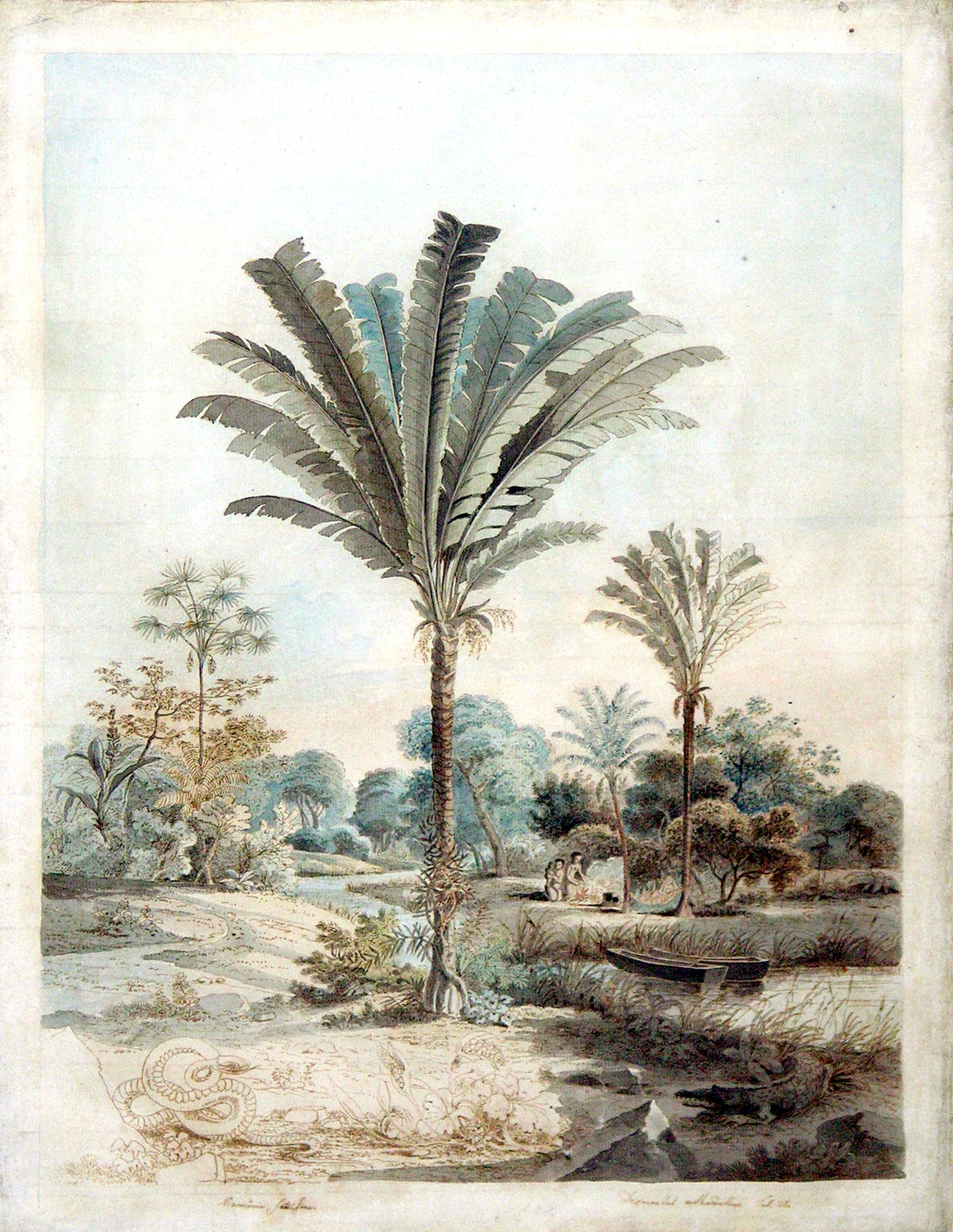CARL FRIEDRICH PHILIPP VON MARTIUS (1794-1868) AND JOHANN MORITZ RUGENDAS (1802-1858) A Brazilian landscape with Indians encamped under palms by a river, a snake and crocodile in the foreground
CARL FRIEDRICH PHILIPP VON MARTIUS (1794-1868) AND JOHANN MORITZ RUGENDAS (1802-1858) A Brazilian landscape with Indians encamped under palms by a river, a snake and crocodile in the foreground
Couldn't load pickup availability
CARL FRIEDRICH PHILIPP VON MARTIUS (1794–1868) AND JOHANN MORITZ RUGENDAS (1802–1858)
A Brazilian landscape with Indians encamped under palms by a river, a snake and crocodile in the foreground
Pencil, ink, and watercolor on paper
Inscribed along lower margin: Manicaria Saccifera / Desmoncus orthacanthos Tab:98
Paper size: 18 1/2 x 14 1/2 in.; Framed size: 28 5/8 x 24 1/8 in.
Literature:
C. F. P. von Martius, Historia Naturalis Palmarum, II (De Brasiliae Palmis Singulatim)
(Leipzig, 1823–1850), pp. 87, 140–141, pl. 98 (Manicaria Saccifera / Desmoncus orthacanthos).
This remarkable watercolor is a study for plate 98 in volume two of Martius’s exhaustive botanical work, Historia Naturalis Palmarum. The final lithograph credits the lithographer, C. Hess (in lap. del), working from the author’s model (Martius palm ad nat.). While the published plate omits the dramatic foreground elements—a snake and a crocodile—this original composition includes them, suggesting a narrative and ecological context. Though Martius is credited with the botanical model, the present watercolor may have been elaborated by Johann Moritz Rugendas for publication, blending scientific observation with artistic vision.
CARL FRIEDRICH PHILIPP VON MARTIUS (1794–1868)
JOHANN MORITZ RUGENDAS (1802–1858)
Martius’s Historia Naturalis Palmarum was based on his travels in Brazil with Johann Baptist von Spix from 1818 to 1820. The work expanded in its third volume (Expositio Systematica) to include all known palm species worldwide at the time.
The majority of the drawings for Volume II, which focused on Brazilian palms, were credited to Martius. However, a few landscape scenes—representing areas Martius had not personally visited—were adapted from works by Frans Post and Johann Moritz Rugendas. As in the present watercolor, Rugendas likely developed many of Martius’s field sketches into finished compositions for publication.
In 1817, King Maximilian Joseph of Bavaria commissioned Martius, a botanist, and Spix, a zoologist, to join the entourage of Archduchess Leopoldina to Brazil. Over the next three years, they conducted extensive investigations into the region’s natural history and Indigenous cultures. Their journey took them from Rio de Janeiro and São Paulo to Montes Claros and the Upper São Francisco, then across to Salvador de Bahia and onward to Pará.
In August 1819, they became the first non-Portuguese Europeans granted permission to explore the Brazilian Amazon. After ascending the river, the pair separated: Martius journeyed up the Japurá River for two months, reaching areas near the modern Colombian border. They reunited at Barra (now Manaus) in March 1820 and returned to Belém, departing for Europe with an enormous collection of natural history specimens and Indigenous artifacts.
Their expedition was documented in the co-authored Reise in Brasilien (Munich, 1823–1832), published in three volumes with an atlas. It also inspired Martius’s two monumental natural history projects: Historia Naturalis Palmarum and the vast Flora Brasiliensis. The latter, begun in 1840, continued until 1906—only one-third of which had been published by the time of Martius’s death in 1868.


